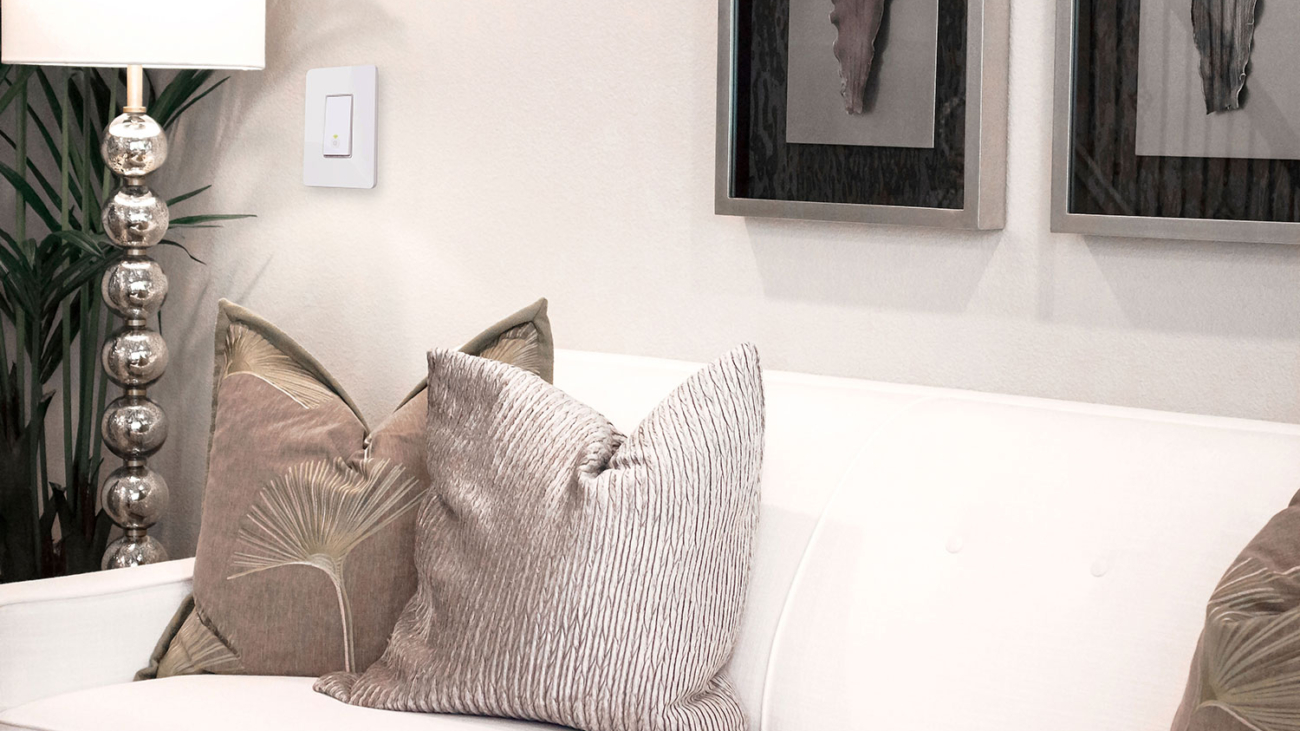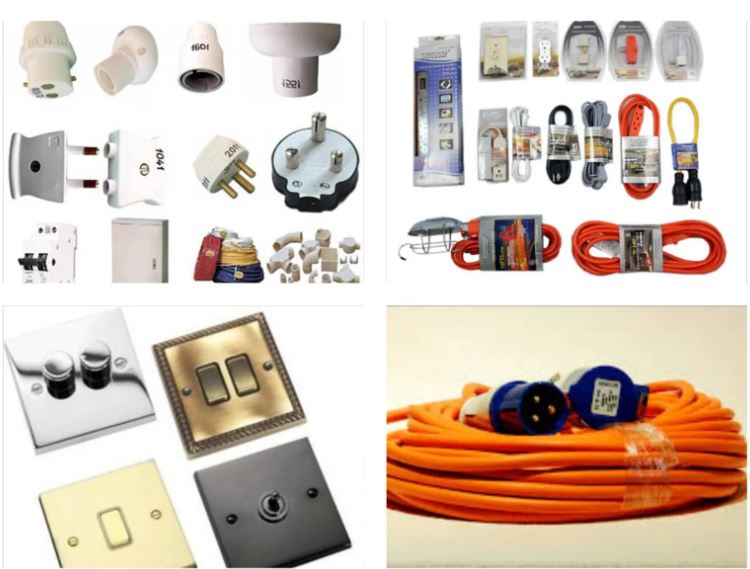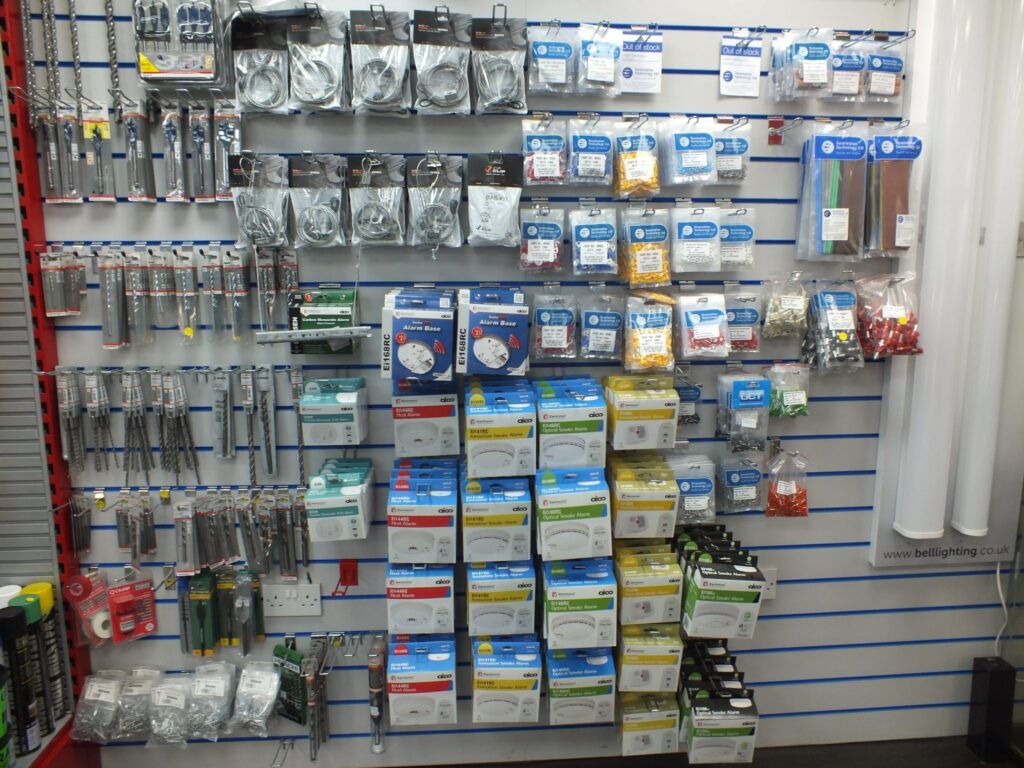In today’s modern homes, light switches play a crucial role in providing convenience and control over the lighting in different rooms. However, choosing the right light switch for each room can be a daunting task, especially with the plethora of options available. Understanding the different types of light switches and considering various factors can help you make an informed decision and achieve the perfect lighting setup throughout your home.
Understanding Different Types of Light Switches
Before delving into the factors to consider, let’s explore the various types of light switches available on the market:
Single-Pole Switches
The single-pole switch is the most common type of power switch found in homes. It operates by interrupting the flow of electricity in a single circuit, allowing you to turn the lights on or off from one location.
Single-pole switches are simple yet effective devices that have been around for decades. They consist of a toggle or rocker that you can flip up or down to control the lights. These switches are typically used in rooms where only one switch controls the lights, such as bedrooms, living rooms, and bathrooms.
Installing a single-pole switch is relatively straightforward. You need to connect the switch to the hot wire, which carries the electrical current, and the load wire, which leads to the light fixture. Once properly installed, you can enjoy the convenience of easily turning the lights on or off with a simple flick of the switch.
Related: Top 10 Must-Have Electrical Supplies for Every Homeowner
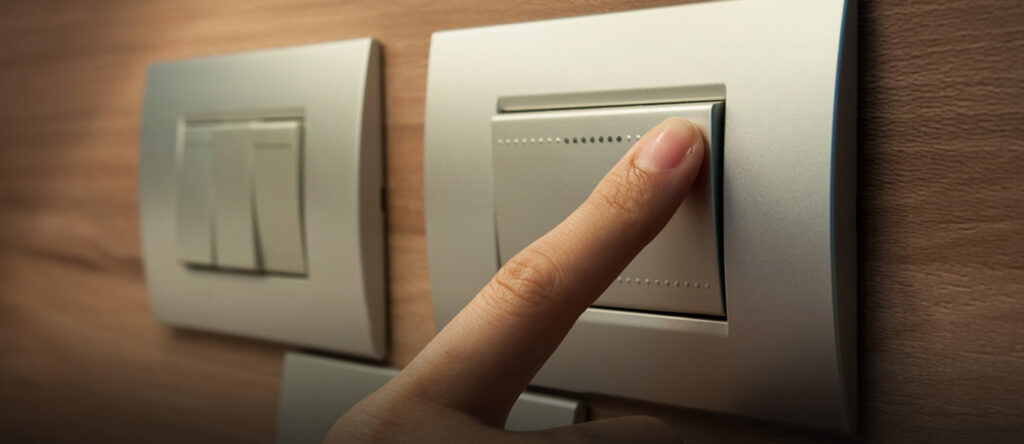
Three-Way Switches
In rooms where multiple entrances or switches control a single light fixture, three-way switches come into play. They enable you to control the lights from two different locations. This means you can turn the lights on at one end of a long hallway and off at the other end.
Three-way switches are commonly used in areas where it is convenient to control the lights from more than one spot, such as staircases, hallways, and large rooms. They consist of two switches that work together to control the flow of electricity. When one switch is up, the other switch can turn the lights on or off, and vice versa.
Installing three-way switches requires a bit more wiring complexity compared to single-pole switches. You need to connect the switches to the hot wire, load wire, and traveler wires, which allow the switches to communicate with each other. With the proper wiring setup, you can enjoy the convenience of controlling the lights from multiple locations.
Dimmer Switches
If you desire the ability to adjust the brightness of your lights, dimmer switches are an excellent choice. They allow you to set the desired light level, creating a cozy ambiance or providing brighter illumination for tasks such as reading or cooking.
Dimmer switches are perfect for creating the right mood in any room. Whether you want soft, romantic lighting for a dinner party or bright, focused lighting for working on a project, dimmer switches give you the flexibility to adjust the intensity of the light to suit your needs.
There are different types of dimmer switches available, including rotary, slide, and touch-sensitive models. Some dimmers even come with advanced features like preset lighting levels and fade-on/fade-off capabilities. Installing a dimmer switch requires replacing your existing single-pole switch and connecting the dimmer to the hot wire and load wire.
Smart Light Switches
With the rise in home automation, smart light switches are becoming increasingly popular. These switches connect to your home’s Wi-Fi network, allowing you to control the lights using your smartphone or voice commands. They also offer features like scheduling, remote access, and integration with virtual assistants.
Smart light switches bring convenience and energy efficiency to your home. With a smart switch, you can turn the lights on or off from anywhere, even when you’re not at home. You can also create schedules to automate your lighting, ensuring that your lights are always on when you need them and off when you don’t.

Many smart light switches also have built-in sensors that can detect motion or ambient light levels. This allows them to automatically turn the lights on when you enter a room or adjust the brightness based on the natural light available. With voice control capabilities, you can simply ask your virtual assistant to turn the lights on or off, making your life even more convenient.
Installing a smart light switch requires a Wi-Fi connection and a compatible smartphone app. You will need to replace your existing switch and connect the smart switch to the hot wire, load wire, and neutral wire. Once installed, you can enjoy the benefits of a connected home and take control of your lighting with ease.
Factors to Consider When Choosing a Light Switch
When selecting light switches for your home, it’s essential to consider the following factors:
Room Function and Lighting Needs
First and foremost, think about the specific function of each room and the type of lighting needed. For instance, a living room may require a dimmer switch to create ambiance, while a kitchen may benefit from a three-way switch for convenience.
When considering the lighting needs, it’s important to take into account the natural light available in each room. If a room receives ample natural light during the day, you may want to opt for a switch that allows you to control both natural and artificial lighting sources. This way, you can adjust the brightness levels accordingly and create a harmonious balance between the two.
Additionally, consider the activities that will take place in each room. For example, a home office may require brighter lighting for increased productivity, while a bedroom may benefit from softer, more relaxing lighting options.
Energy Efficiency
Energy efficiency is another vital aspect to consider. Opt for switches that are compatible with energy-saving light bulbs such as LEDs or CFLs. These types of bulbs not only consume less energy but also have a longer lifespan, reducing the need for frequent replacements.
Furthermore, look for switches with energy-saving features like motion sensors or timers. Motion sensors can automatically turn off the lights when no one is in the room, preventing unnecessary energy consumption. Timers, on the other hand, can be programmed to turn the lights on and off at specific times, ensuring that lights are not left on when not needed.
By choosing energy-efficient light switches, you not only contribute to a greener environment but also save on your electricity bills in the long run.
Installation and Maintenance
Consider the installation process and maintenance requirements of the light switches. If you’re comfortable with DIY projects, you can install switches yourself by following the provided instructions. However, more complex installations, such as those involving rewiring or retrofitting, may require professional assistance to ensure safety and compliance with electrical codes.
When it comes to maintenance, it’s important to choose switches that are known for their durability and reliability. Look for switches made from high-quality materials that can withstand frequent use without wearing out easily. This way, you can minimize the need for frequent maintenance or replacements.
Additionally, consider the accessibility of the switches. If you have family members with mobility issues or disabilities, you may want to opt for switches that are easy to reach and operate, such as those with larger buttons or touch-sensitive controls.
Aesthetic Appeal
Last but not least, think about the aesthetic appeal of the light switches. They should complement the overall design and decor of each room. Nowadays, you can find light switches in various styles, colors, and finishes to match any interior design scheme.
For a modern and sleek look, consider switches with minimalist designs and clean lines. On the other hand, if you have a more traditional or vintage-inspired interior, switches with decorative plates or intricate details can add a touch of elegance.
Remember to also consider the finish of the switches. Whether you prefer a glossy or matte look, you can find switches with finishes like brushed nickel, chrome, brass, or even wood to suit your personal style and preferences.
By carefully considering the aesthetic appeal of the light switches, you can ensure that they seamlessly blend into the overall design of your home, enhancing its visual appeal.
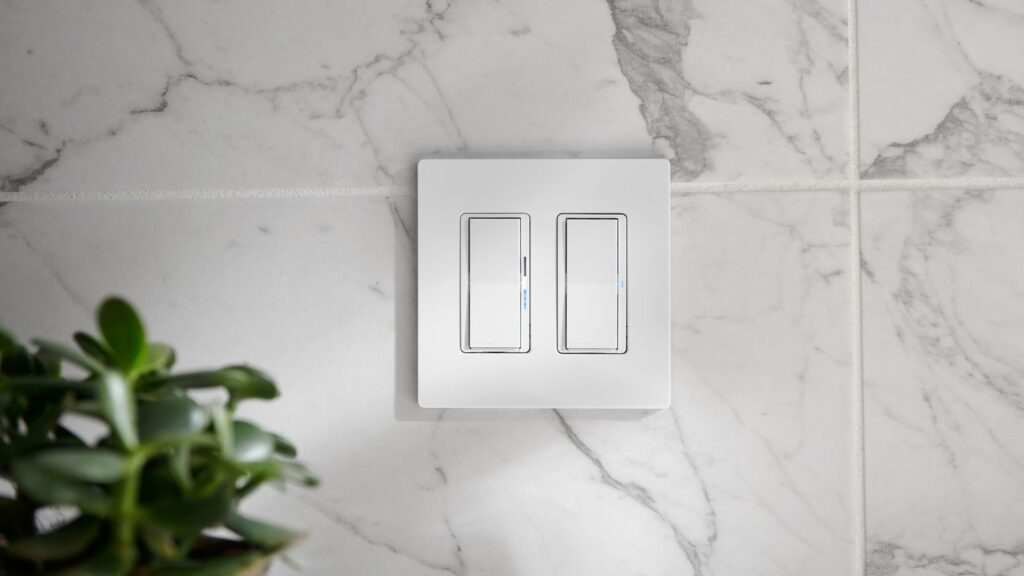
Selecting Light Switches for Specific Rooms
Now that we’ve covered the different types of light switches and the factors to consider, let’s delve into selecting light switches for specific rooms:
Light Switches for the Living Room
In the living room, where different activities take place, installing a combination of single-pole switches and dimmer switches can provide flexibility. Single-pole switches can control the general lighting, while dimmer switches can create ambiance for movie nights or entertaining guests.
Imagine coming home after a long day at work, ready to unwind in your cozy living room. With the right light switches, you can easily adjust the brightness to your desired level, creating a relaxing atmosphere. Whether you prefer a soft glow for reading or a brighter light for social gatherings, dimmer switches allow you to set the perfect mood.
Additionally, having single-pole switches to control the general lighting is convenient for everyday use. With a simple flick of a switch, you can illuminate the entire room, providing ample light for various activities such as watching TV, playing board games, or simply enjoying quality time with your loved ones.
Light Switches for the Kitchen
In the kitchen, functionality and convenience are key. Installing three-way switches near the entrances and exits of the kitchen will allow you to control the lights from multiple points. This is particularly useful when your hands are full while cooking or when you need to navigate the kitchen at night.
Picture yourself preparing a delicious meal in your well-designed kitchen. With three-way switches strategically placed, you can easily turn the lights on or off without having to walk across the room. This feature not only saves you time and effort but also enhances safety by reducing the risk of accidents in a potentially busy and crowded space.
Furthermore, having the ability to control the lighting from multiple points ensures that you can always find the perfect balance of brightness. Whether you’re chopping vegetables, reading a recipe, or enjoying a quick snack, having the right amount of light in the kitchen is essential for a pleasant and efficient cooking experience.
Light Switches for the Bedroom
In the bedroom, having easy access to lighting control from the bed is essential. Consider installing smart light switches that can be controlled via voice commands or a smartphone app. This way, you can effortlessly turn the lights on or off without getting out of bed.
Imagine waking up in the morning to the sound of your alarm. Instead of fumbling in the dark to find the light switch, you can simply use your voice to command the lights to turn on. With smart light switches, you can create a personalized morning routine that gradually brightens the room, simulating a natural sunrise and easing you into the day.
Moreover, smart light switches offer convenience throughout the day. Whether you’re reading a book before bedtime or getting ready for a night out, you can easily adjust the lighting to suit your needs without leaving the comfort of your bed. With just a few taps on your smartphone, you can dim the lights to create a cozy ambiance or brighten the room for better visibility.
Light Switches for the Bathroom
When it comes to the bathroom, safety and convenience should be the primary considerations. Installing a combination of motion sensor switches and single-pole switches can provide the best of both worlds. The motion sensor switch ensures the lights turn on automatically when you enter the room, while the single-pole switch allows manual control when needed.
Imagine stepping into your bathroom during the night. Instead of fumbling for the light switch in the dark, the motion sensor switch detects your presence and instantly illuminates the room, guiding you safely to your destination. This feature not only enhances convenience but also promotes energy efficiency by ensuring the lights are only on when needed.
Additionally, having a single-pole switch in the bathroom allows you to manually control the lighting when desired. Whether you prefer a brighter light for applying makeup or a softer glow for a relaxing bath, having the option to adjust the brightness according to your preference adds a personalized touch to your daily routine.
By considering the type of room, lighting needs, energy efficiency, ease of installation and maintenance, and aesthetic appeal, you can select the perfect light switches for every room in your home. Whether you opt for single-pole switches, three-way switches, dimmer switches, or smart light switches, the right choice will enhance your daily lighting experience and elevate the overall ambiance of your living spaces.

